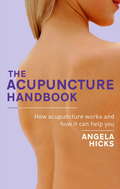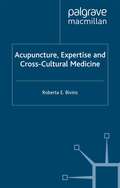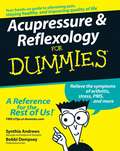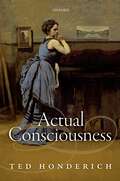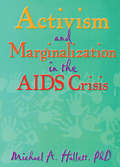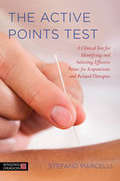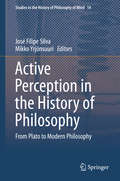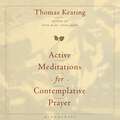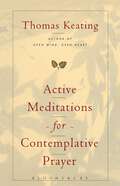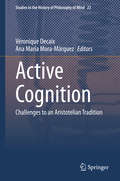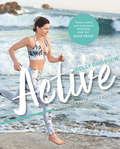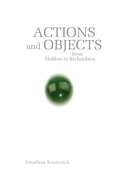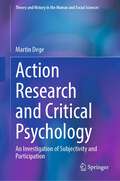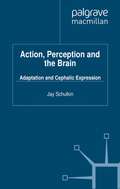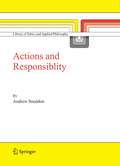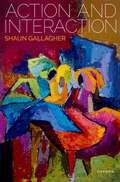- Table View
- List View
The Acupuncturist's Guide to Conventional Medicine, Second Edition
by Clare StephensonOffering a systematic comparative approach to Western and Eastern medicine, this unique textbook enables students and practitioners of Chinese Medicine to develop a core understanding of conventional medical language and treatments. Acupuncture practitioners increasingly find themselves working alongside Western healthcare professionals. Now in its second edition, this book is a guide to conventional medical diagnoses, symptoms and treatments, and using examples drawn from the author's experience and knowledge of TCM it encourages reflection on how these diagnoses may be interpreted from a more holistic medical perspective. It includes introductory sections on physiology, pathology and pharmacology, chapters devoted to the physiological systems of the body and the conventional approach to the treatment of diseases that can affect them, and information on dealing with patients in practice. Accompanying online material, including self-testing questions and answers and checklists for revision, is available for those wishing to use the text for systematic study.
The Acupuncture Handbook: How acupuncture works and how it can help you
by Angela HicksAcupuncture is one of the most popular and widely accepted complementary therapies available to the general public. And yet many of us know little about it, what it can be used for, and how it works. This book explains: * What it feels like to have treatment* How acupuncture works* How acupuncture helps to balance your energy and strengthen your immune system* How it can successfully treat a wide variety of ailments, from panic attacks to hot flushes, asthma, joint pains and the common cold* Which of the 'Five Element' types you are and how this relates to your health* How acupuncture can be used safely and effectively to treat pregnant women, children, and animals* How to find the right practitioner. Self-help information and questionnaires are also included to enable you to discover more about your diagnosis.
Acupuncture, Expertise and Cross-Cultural Medicine (Science, Technology and Medicine in Modern History)
by R. BivinsAlternative medicine is a fifty billion dollar per year industry. But is it all nonsense? The Whole Story rounds up the latest evidence on the placebo effect, the randomized control trial, personalized genetic medicine, acupuncture, homeopathy, osteopathy and more. It reaches a provocative conclusion: alternative therapies' whole-body approach might be just what medicine really needs right now to help crack the tough, chronic conditions seemingly untouched by the revolutions of surgery, antiseptics, antibiotics, vaccines and molecular biology.
Acupuncture: An Anatomical Approach, Second Edition
by Houchi Dung Indra K. ReddyPracticed for more than 2,000 years, acupuncture was once restricted to the realm of alternative medicine. It was thought to be based on mythical elements and not easily understood by those in the scientific community. Acupuncture: An Anatomical Approach, Second Edition dispels these notions and brings this once backroom therapy into the forefront
Acupressure and Reflexology For Dummies (For Dummies)
by Synthia Andrews Bobbi DempseyFeatures healing routines and illustrations to guide you Ease your aches and find relief through the power of touch Searching for alternative treatments for pain? This friendly, do-it-yourself guide introduces you to the basics and benefits of acupressure and reflexology, showing you step by step how to nurture your emotional and physical well-being and that of someone else. You'll see how to target specific body parts to address your ailments and improve your emotional as well as your physical well-being. Understand basic healing principles Relieve your specific aches and pains Boost your immune system Address age-related ailments Find professional help
Acupressure and Reflexology For Dummies
by Synthia Andrews Bobbi DempseyFeatures healing routines and illustrations to guide you Ease your aches and find relief through the power of touch Searching for alternative treatments for pain? This friendly, do-it-yourself guide introduces you to the basics and benefits of acupressure and reflexology, showing you step by step how to nurture your emotional and physical well-being and that of someone else. You'll see how to target specific body parts to address your ailments and improve your emotional as well as your physical well-being. Understand basic healing principles Relieve your specific aches and pains Boost your immune system Address age-related ailments Find professional help
Actual Consciousness
by Ted HonderichWhat is it for you to be conscious? There is no agreement whatever in philosophy or science: it has remained a hard problem, a mystery. Is this partly or mainly owed to the existing theories not even having the same subject, not answering the same question? In Actual Consciousness, Ted Honderich sets out to supersede dualisms, objective physicalisms, abstract functionalism, externalisms, and other positions in the debate. He argues that the theory of Actualism, right or wrong, is unprecedented, in nine ways. (1) It begins from gathered data and proceeds to an adequate initial clarification of consciousness in the primary ordinary sense. This consciousness is summed up as something's being actual. (2) Like basic science, Actualism proceeds from this metaphorical or figurative beginning to what is wholly literal and explicit—constructed answers to the questions of what is actual and what it is for it to be actual. (3) In so doing, the theory respects the differences of consciousness within perception, consciousness that is thinking in a generic sense, and consciousness that is generic wanting. (4) What is actual with your perceptual consciousness is a subjective physical world out there, very likely a room, differently real from the objective physical world, that other division of the physical world. (5) What it is for the myriad subjective physical worlds to be actual is for them to be subjectively physical, which is exhaustively characterized. (6) What is actual with cognitive and affective consciousness is affirmed or valued representations. The representations being actual, which is essential to their nature, is their being differently subjectively physical from the subjective physical worlds. (7) Actualism, naturally enough when you think of it, but unlike any other existing general theory of consciousness, is thus externalist with perceptual consciousness but internalist with respect to cognitive and affective consciousness. (8) It satisfies rigorous criteria got from examination of the failures of the existing theories. In particular, it explains the role of subjectivity in thinking about consciousness, including a special subjectivity that is individuality. (9) Philosophers and scientists have regularly said that thinking about consciousness requires just giving up the old stuff and starting again. Actualism does this. Science is served by this main line philosophy, which is concentration on the logic of ordinary intelligence—clarity, consistency and validity, completeness, generality.
The Activity Year Book: A Week by Week Guide for Use in Elderly Day and Residential Care (PDF)
by Anni Bowden Nancy LewthwaiteEngagement in meaningful activity is an important aspect of human existence, regardless of one's cognitive abilities. Even in the later stages of dementia, people can still be engaged in activities at a level that allows them to be successful. In fact in these later stages, where cognitive abilities may be waning, the need for activity becomes greater, as cognitive stimulation helps preserve what skills remain. For care staff looking after older people, many of whom may have some degree of dementia, coming up with ideas for activities of a suitable level to keep their residents engaged and stimulated can be challenging. The Activity Year Book solves this problem, offering week by week themed activities. From Valentine's Day quizzes to Bonfire Night word searches, it has activities relating to every important date in the calendar, and also encourages reminiscence and discussion around these events. This book will be invaluable to care staff looking for a simple way of improving the lives of their residents, week by week, all year round.
Activities for Older People in Care Homes: A Handbook for Successful Activity Planning
by Sarah CrockettWhen tasked with providing activities for older people in care homes, it can be difficult to know where to begin. What constitutes an activity? How can you make sure activities are as positive and person-centred as possible? What can you actually do? Written by an experienced activity coordinator, this handbook is an indispensable companion for others in this role. The author provides useful background information on dementia, the importance of activities and how to get to know residents through life story work. She addresses important practical considerations such as how to assess a resident for suitable activities, activity planning, timetabling, budgeting and money-stretching, as well as more subtle issues such as how to enthuse residents and staff to join in and how to deal with resistance from colleagues. An A-Z of inventive ideas and step-by-step instructions for activities as wide-ranging as arts and crafts, cooking, exercise, gardening, meditation, music, reminiscence, themed days and trips out is also included. Offering peer-to-peer advice and encouragement as well as a wealth of practical ideas and suggestions, this is essential reading for all those involved in activity planning for older people, including those with dementia, in care homes.
Activities for Older People in Care Homes: A Handbook for Successful Activity Planning (PDF)
by Sarah CrockettWhen tasked with providing activities for older people in care homes, it can be difficult to know where to begin. What constitutes an activity? How can you make sure activities are as positive and person-centred as possible? What can you actually do? Written by an experienced activity coordinator, this handbook is an indispensable companion for others in this role. The author provides useful background information on dementia, the importance of activities and how to get to know residents through life story work. She addresses important practical considerations such as how to assess a resident for suitable activities, activity planning, timetabling, budgeting and money-stretching, as well as more subtle issues such as how to enthuse residents and staff to join in and how to deal with resistance from colleagues. An A-Z of inventive ideas and step-by-step instructions for activities as wide-ranging as arts and crafts, cooking, exercise, gardening, meditation, music, reminiscence, themed days and trips out is also included. Offering peer-to-peer advice and encouragement as well as a wealth of practical ideas and suggestions, this is essential reading for all those involved in activity planning for older people, including those with dementia, in care homes.
Activism and Marginalization in the AIDS Crisis
by Michael A HallettActivism and Marginalization in the AIDS Crisis shows readers how the advent of HIV-disease has brought into question the utility of certain forms of “activism” as they relate to understanding and fighting the social impacts of disease. This informative and powerful book is centrally concerned about the ways in which institutionally governed social constructions of HIV/AIDS affect policy and public images of the disease more so than activist efforts. It asserts that an accounting of the power institutional structures have over the dominant social constructions of HIV disease is fundamental to adequate forms of present and future AIDS activism. Chapters in Activism and Marginalization in the AIDS Crisis demonstrate how, despite what is thought of as the “successful activism” of the past decade, the claims of the HIV-positive are still being ignored, still being marginalized, and still being administratively “handled” and exploited even as the plight of those who find themselves HIV-positive worsens. Although chapters reject the assertion that activism has been a highly effective remedy to HIV-positive voicelessness, authors do not deny that activists have been vocal, but that they continue to be ignored despite their vocality.Contributors in Activism and Marginalization in the AIDS Crisis offer numerous examples of institutional control and demonstrate that institutional structures, and not activists, are controlling the public meaning of HIV-related issues. Readers learn how messages about HIV/AIDS are produced, negotiated, modified, and sustained through institutional mechanisms that serve mostly institutional interests rather than those of the HIV-positive. In gaining an understanding of these issues, readers will begin to learn how to modify and strengthen activist efforts with valuable insight on: the lack of HIV-positive voices in mainstream news portrayals of HIV/AIDS research on constructions of HIV-disease at the state government level social constructions and how they affect HIV/AIDS policy the political construction of AIDS and interest-based struggles the emergent “bio-politics” of HIV and homosexuality in the U.S. how institutional power works to govern public understanding of HIV diseaseInstitutional structures are defined in this book as groups engaged in and defined by the production of various “truths” which sustain them. Institutional power may be defined as the capacity to regulate, constrain, and disseminate versions of “truth.” Activism and Marginalization in the AIDS Crisis reveals how HIV activist groups have been outmaneuvered when it comes to the production and dissemination of various “truths” about HIV/AIDS by institutional structures more deeply steeped in social legitimacy and which have a superior capacity for message dissemination.HIV/AIDS activists, HIV-positive persons and those with AIDS, HIV/AIDS educators, public and institutional policymakers, health professionals, and the general public will find this book essential to understanding the social constructions of HIV/AIDS, how these affect HIV/AIDS-related policy and public opinion, and how to begin to cipher through the plethora of information to find and promote the “truth.”
Activism and Marginalization in the AIDS Crisis
by Michael A HallettActivism and Marginalization in the AIDS Crisis shows readers how the advent of HIV-disease has brought into question the utility of certain forms of “activism” as they relate to understanding and fighting the social impacts of disease. This informative and powerful book is centrally concerned about the ways in which institutionally governed social constructions of HIV/AIDS affect policy and public images of the disease more so than activist efforts. It asserts that an accounting of the power institutional structures have over the dominant social constructions of HIV disease is fundamental to adequate forms of present and future AIDS activism. Chapters in Activism and Marginalization in the AIDS Crisis demonstrate how, despite what is thought of as the “successful activism” of the past decade, the claims of the HIV-positive are still being ignored, still being marginalized, and still being administratively “handled” and exploited even as the plight of those who find themselves HIV-positive worsens. Although chapters reject the assertion that activism has been a highly effective remedy to HIV-positive voicelessness, authors do not deny that activists have been vocal, but that they continue to be ignored despite their vocality.Contributors in Activism and Marginalization in the AIDS Crisis offer numerous examples of institutional control and demonstrate that institutional structures, and not activists, are controlling the public meaning of HIV-related issues. Readers learn how messages about HIV/AIDS are produced, negotiated, modified, and sustained through institutional mechanisms that serve mostly institutional interests rather than those of the HIV-positive. In gaining an understanding of these issues, readers will begin to learn how to modify and strengthen activist efforts with valuable insight on: the lack of HIV-positive voices in mainstream news portrayals of HIV/AIDS research on constructions of HIV-disease at the state government level social constructions and how they affect HIV/AIDS policy the political construction of AIDS and interest-based struggles the emergent “bio-politics” of HIV and homosexuality in the U.S. how institutional power works to govern public understanding of HIV diseaseInstitutional structures are defined in this book as groups engaged in and defined by the production of various “truths” which sustain them. Institutional power may be defined as the capacity to regulate, constrain, and disseminate versions of “truth.” Activism and Marginalization in the AIDS Crisis reveals how HIV activist groups have been outmaneuvered when it comes to the production and dissemination of various “truths” about HIV/AIDS by institutional structures more deeply steeped in social legitimacy and which have a superior capacity for message dissemination.HIV/AIDS activists, HIV-positive persons and those with AIDS, HIV/AIDS educators, public and institutional policymakers, health professionals, and the general public will find this book essential to understanding the social constructions of HIV/AIDS, how these affect HIV/AIDS-related policy and public opinion, and how to begin to cipher through the plethora of information to find and promote the “truth.”
The Active Points Test: A Clinical Test for Identifying and Selecting Effective Points for Acupuncture and Related Therapies
by Stefano MarcelliThe Active Points Test is a clinical instrument for identifying and selecting the points on the skin that are most effective for treatment. These points may be close to the seat of the disease, for example on the shoulder for periarthritis, or far away, for example on the ear or head for stomach pain or a cough. Drawing on principles from TCM and Western medicine, Dr Stefano Marcelli sets out the theory of the approach and offers detailed guidance on how to carry out the test and how to interpret the results, as well as explaining how the test can be used in different therapies. The test is based on the discovery that a patient experiencing an ongoing symptom can be made aware of the capacity of a few points on the skin to treat his or her discomfort. The test involves stimulating the skin to the appropriate degree whilst asking the patient to identify whether there is any change in the symptom he or she is suffering, and can be used to treat a wide range of symptoms, from articular pain to migraine, tachycardia, asthenia and depression. Published for the first time in 1995, this substantially updated edition contains the most recent supporting evidence and many new explanatory diagrams and photographs. Providing a comprehensive and effective system for point selection, this is essential reading for practitioners and students of acupuncture and related reflex and manual therapies, including massage, tuina, Shiatsu and Rolfing.
The Active Points Test: A Clinical Test for Identifying and Selecting Effective Points for Acupuncture and Related Therapies (PDF)
by Stefano MarcelliThe Active Points Test is a clinical instrument for identifying and selecting the points on the skin that are most effective for treatment. These points may be close to the seat of the disease, for example on the shoulder for periarthritis, or far away, for example on the ear or head for stomach pain or a cough. Drawing on principles from TCM and Western medicine, Dr Stefano Marcelli sets out the theory of the approach and offers detailed guidance on how to carry out the test and how to interpret the results, as well as explaining how the test can be used in different therapies. The test is based on the discovery that a patient experiencing an ongoing symptom can be made aware of the capacity of a few points on the skin to treat his or her discomfort. The test involves stimulating the skin to the appropriate degree whilst asking the patient to identify whether there is any change in the symptom he or she is suffering, and can be used to treat a wide range of symptoms, from articular pain to migraine, tachycardia, asthenia and depression. Published for the first time in 1995, this substantially updated edition contains the most recent supporting evidence and many new explanatory diagrams and photographs. Providing a comprehensive and effective system for point selection, this is essential reading for practitioners and students of acupuncture and related reflex and manual therapies, including massage, tuina, Shiatsu and Rolfing.
Active Phytochemicals from Chinese Herbal Medicines: Anti-Cancer Activities and Mechanisms
by Wing Shing HoBiomedical ScienceChinese herbal medicine represents complementary or adjunctive therapies that often can improve the efficacy of Western medicine to achieve the pharmacological effects, especially in cancer treatment. However, the combination of herbs with therapeutic drugs can raise potential health risk. Building a bridge between Western medicin
Active Perception in the History of Philosophy: From Plato to Modern Philosophy (Studies in the History of Philosophy of Mind #14)
by José Filipe Silva Mikko YrjönsuuriThe aim of the present work is to show the roots of the conception of perception as an active process, tracing the history of its development from Plato to modern philosophy. The contributors inquire into what activity is taken to mean in different theories, challenging traditional historical accounts of perception that stress the passivity of percipients in coming to know the external world. Special attention is paid to the psychological and physiological mechanisms of perception, rational and non-rational perception and the role of awareness in the perceptual process.Perception has often been conceived as a process in which the passive aspects - such as the reception of sensory stimuli - were stressed and the active ones overlooked. However, during recent decades research in cognitive science and philosophy of mind has emphasized the activity of the subject in the process of sense perception, often associating this activity to the notions of attention and intentionality. Although it is recognized that there are ancient roots to the view that perception is fundamentally active, the history remains largely unexplored.The book is directed to all those interested in contemporary debates in the fields of philosophy of mind and cognitive psychology who would like to become acquainted with the historical background of active perception, but for historical reliability the aim is to make no compromises.
Active Meditations for Contemplative Prayer
by Thomas KeatingThomas Keating was a Cistercian monk who founded the worldwide 'Contemplative Outreach', teaching people the art of meditation. This is a compilation of quotes from his books, to be perused in times of peace as well as crisis. His distinct voice offers solace and wise teaching on the method of Centering Prayer and how it can affect one's daily life. An inspiration and a guide for busy people, who wish to find a moment in their hectic days to reflect in peaceful prayer.
Active Meditations for Contemplative Prayer
by Thomas KeatingThomas Keating was a Cistercian monk who founded the worldwide 'Contemplative Outreach', teaching people the art of meditation. This is a compilation of quotes from his books, to be perused in times of peace as well as crisis. His distinct voice offers solace and wise teaching on the method of Centering Prayer and how it can affect one's daily life. An inspiration and a guide for busy people, who wish to find a moment in their hectic days to reflect in peaceful prayer.
Active Cognition: Challenges to an Aristotelian Tradition (Studies in the History of Philosophy of Mind #23)
by Véronique Decaix Ana María Mora-MárquezThis edited work draws on a range of contributed expertise to trace the fortune of an Aristotelian thesis over different periods in the history of philosophy. It presents eight cases of direct or indirect challenges to the Aristotelian passive account of human cognition, taking the reader from late antiquity to the 20th century. Chapters analyse the (often indirect) effect of Aristotle’s account of cognition on later periods. In his influential De anima, Aristotle describes human cognition, both sensitive and intellectual, as the reception of a form in the cognitive subject. Aristotle’s account has been commonly interpreted as fundamentally passive – the cognitive subject is a passive actor upon which a cognitive process is acted by the object. However, at least from the time of Alexander of Aphrodisias onwards, this interpretation has been challenged by authors who posit a fundamental active aspect of cognition. Readers will discover how one or more of three concerns – ontological superiority, direct realism and moral responsibility – drive the active accounts of cognition. Contributed chapters from top scholars examine how these three concerns lead thinkers to take issue with the idea that cognition is a passive process. The authors consider Jesuit accounts of cognition, Malebranche on judgment, and Wittgenstein on perception, as well as Stumpf on active cognition, among other relevant works. This book is ideally suited to scholars of philosophy, especially those with an interest in medieval epistemology, the influence of Aristotle, philosophy of mind and theories of cognition.
Active: Workouts that work for you
by Holly Davidson'Holly makes exercise seem effortless and fun.' - Sadie FrostWe all want to feel fit, healthy and strong, but with today's fast-paced lifestyles it can be hard to find the time or motivation to work out. Holly Davidson is a top personal trainer who has used her years of experience to devise an exercise programme that is varied, flexible, fun and easy to fit into your day to day life.Holly is used to working with clients who have jam-packed schedules, so she has dozens of clever tips that will help fit your workout into your regular routine. This book will guide you to maximise the experience of training anywhere, and to use these tools and techniques to craft a regime that is not boring, repetitive, monotonous, but instead varied and diverse.Holly's sustainable, holistic approach is based on balance and setting realistic and achievable goals. It's not about crash dieting or scrambling to get a bikini body - it's about integrating fitness into your lifestyle and making workouts work for you.With her encouraging tone and easy-to-follow exercise routines, Holly is with you every step of the way. Feel happy. Feel healthy. Feel strong. And get active!
Actions and Objects from Hobbes to Richardson
by Jonathan KramnickHow do minds cause events in the world? How does wanting to write a letter cause a person's hands to move across the page, or believing something to be true cause a person to make a promise? In Actions and Objects, Jonathan Kramnick examines the literature and philosophy of action during the late seventeenth and early eighteenth centuries, when philosophers and novelists, poets and scientists were all concerned with the place of the mind in the world. These writers asked whether belief, desire, and emotion were part of nature—and thus subject to laws of cause and effect—or in a special place outside the natural order. Kramnick puts particular emphasis on those who tried to make actions compatible with external determination and to blur the boundary between mind and matter. He follows a long tradition of examining the close relation between literary and philosophical writing during the period, but fundamentally revises the terrain. Rather than emphasizing psychological depth and interiority or asking how literary works were understood as true or fictional, he situates literature alongside philosophy as jointly interested in discovering how minds work.
Action Research and Critical Psychology: An Investigation of Subjectivity and Participation (Theory and History in the Human and Social Sciences)
by Martin DegeThis book examines the theoretical developments in the field of Action Research from a historical perspective. The central focus of the investigation is the concepts of democracy and subjectivity as defined by the field’s various traditions. To address this issue, this book offers a thorough investigation of the theoretical and historical underpinnings of Action Research in order to argue that such a clarification allows for a transcendence of the distinction between theory and practice in political action. This transcendence will be achieved with the theories of the German critical psychologist Klaus Holzkamp and his interpretation of subjectivity and democracy. Holzkamp establishes a comprehensive mode of change based on the contradiction of existing possibilities for action and restrictions in a concretely given empirical situation. This book is aimed at History of Psychology Classes, Social Workers, Activism Researchers, Undergraduate Courses in Critical Thinking and Political Action, and Decolonial Theory in Psychology.
Action, Perception and the Brain: Adaptation and Cephalic Expression (New Directions in Philosophy and Cognitive Science)
by Jay SchulkinTheories of brain evolution stress communication and sociality are essential to our capacity to represent objects as intersubjectively accessible. How did we grow as a species to be able to recognize objects as common, as that which can also be seen in much the same way by others? Such constitution of intersubjectively accessible objects is bound up with our flexible and sophisticated capacities for social cognition understanding others and their desires, intentions, emotions, and moods which are crucial to the way human beings live. This book is about contemporary philosophical and neuroscientific perspectives on the relation of action, perception, and cognition as it is lived in embodied and socially embedded experience. This emphasis on embodiment and embeddedness is a change from traditional theories, which focused on isolated, representational, and conceptual cognition. In the new perspectives contained in our book, such 'pure' cognition is thought to be under-girded and interpenetrated by embodied and embedded processes.
Action and Responsibility (Library of Ethics and Applied Philosophy #18)
by Andrew SneddonThis book is an exploration of what it takes for an event to count as an action. I first became interested in this topic nearly a decade ago while working on a different topic. I kept coming across philosophers making claims about the nature of action that seemed false or at least dubious to me. As a consequence I turned to the philosophy of action directly, to get to the heart of the matter. I have wrestled with this territory ever since. I hope that, with this book, I have finally earned the intuitions that put me at odds with the philosophers I was originally reading. This book develops ideas in Part Two of my doctoral dissertation, which I wrote at Queen’s University in Kingston, Ontario, Canada. I loved being at Queen’s, for both professional and personal reasons. My thanks go to the Social Sciences and Humanities Research Council of Canada for financial support as a doctoral candidate. Steve Leighton and Ronald de Sousa were readers for my dissertation. They provided some early and invaluable challenges to the ideas developed here. My deepest debt of gratitude is owed to David Bakhurst, my supervisor. I learned a lot from David; this book would not be the same without his help.
Action and Interaction
by Shaun GallagherShaun Gallagher presents a ground-breaking interdisciplinary account of human action, bringing out its essentially social dimension. He explores and synthesizes the different approaches of action theory, social cognition, and critical social theory. He shows that in order to understand human agency and the aspects of mind that are associated with it, we need to grasp the crucial role of context or circumstance in action, and the normative constraints of social and cultural practices. He also investigates issues concerning social cognition and embodied intersubjective interaction, including direct social perception and the role of narrative and communicative practices from an interdisciplinary perspective. Gallagher thereby brings together embodied and enactive approaches to action for the first time in this book and, in developing an alternative to standard conceptions of understanding others, he bridges social cognition and critical social theory, drawing out the implications for recognition, autonomy, and justice.

